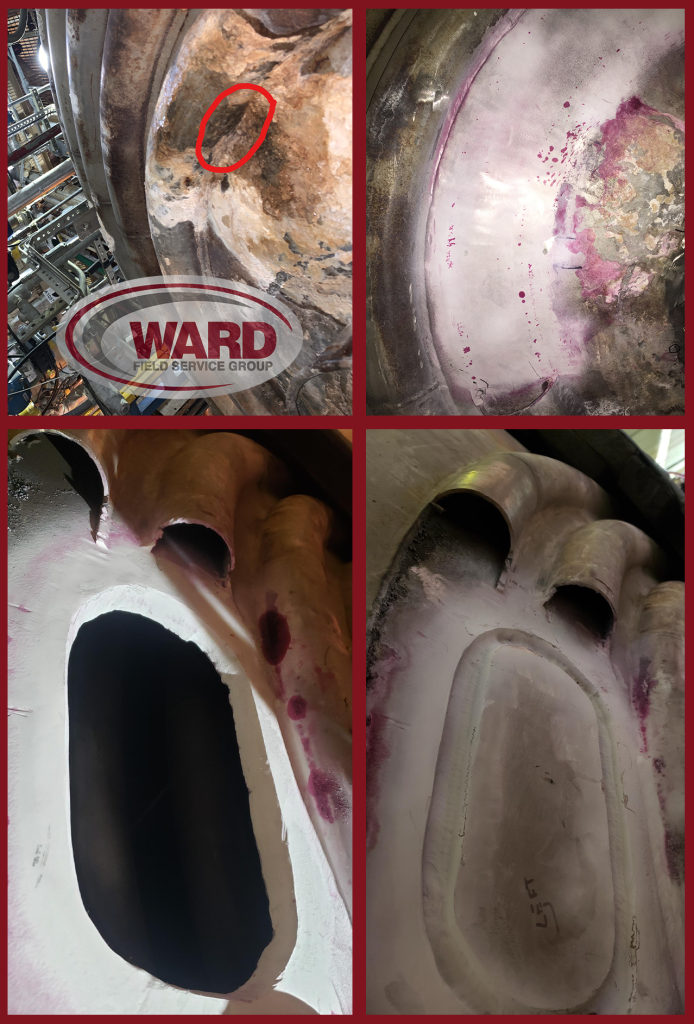For October’s segment of “How’d They Do That”, we will focus on a scary (?) problem: Chloride Stress Corrosion Cracking (Cl-SCC).
While mobilized to replace several bottom head nozzles on a half pipe jacketed reactor, our technicians noticed the original material was welding oddly with the telltale signs of Stress Corrosion Cracking. Luckily, our technicians knew what they were seeing, so we stopped work to discuss options with Ward Engineering and the customer.
After removing more of the original half pipe and performing Liquid Penetrant Testing, we saw that there was significant cracking underneath the half pipe. Further testing via the Phased Array Ultrasonic method uncovered that there was mid-wall cracking in the head present, meaning that the cracking had spread and propagated through the head almost 1/2″ on a 1″ thick head.
This reactor uses some highly flammable products, so it was critical that the solution ensures the safety of all people and property in the area. Therefore, there was no way for the customer to use the equipment until it was repaired or replaced. A new reactor would take around six months to build and longer to install and they just didn’t have that much time.
We decided with the customer to perform a full Phased Array UT test of the entire lower head from the inside to map out any indications visible via that method. Several areas of concern were noted and marked. At that point, it was up to Ward to develop a path forward to perform an NBIC/ASME Code repair on this reactor. Ward’s Engineering Department came up with a plan to replace the entire dished portion of the bottom head with new half pipe.
Our Field crew was able to build a special fixture to plasma cut the dish, along with a special cart to hold and install the head. While installing the head, we ran into additional SCC issues at the margins, however, we were able to remove all the SCC and pass all NDE including 100% X-Ray.
The customer was only down a few weeks as opposed to months and were able to keep their contract obligations with their clients. We love to help our customers repair critical equipment so they can keep running safely and profitably.







